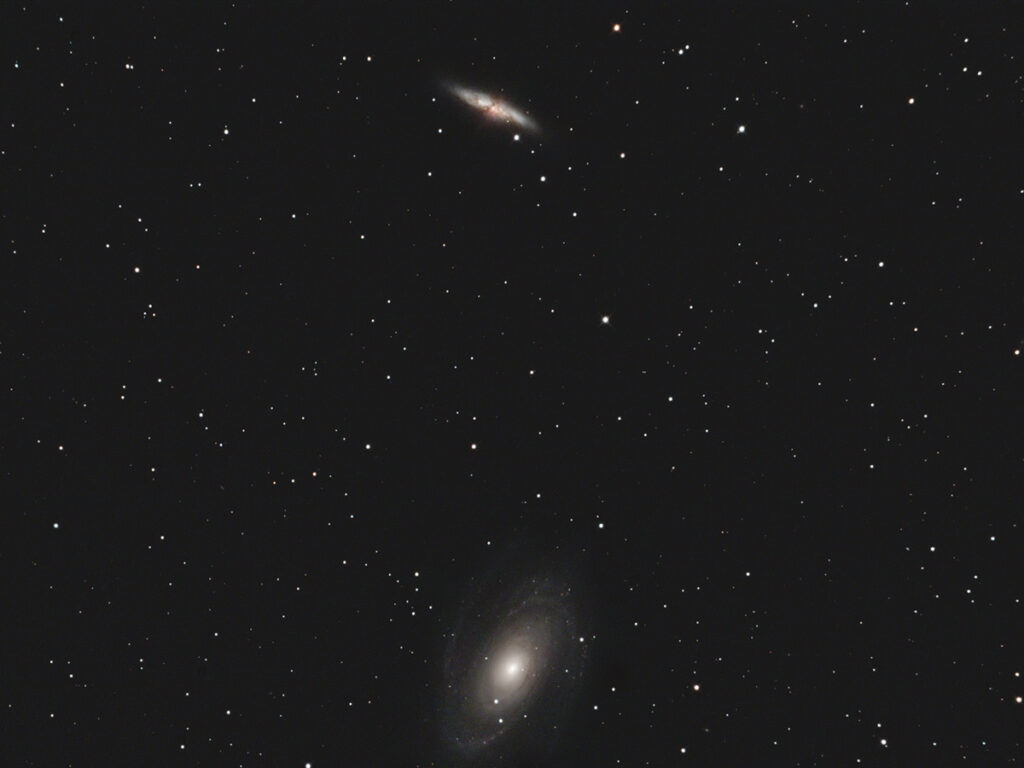
Telescope: Astro-Tech 8” f/8 Ritchey-Chretien, Orion Atlas EQ-G
Camera: Canon EOS Ra, Baader Mk III MPCC
Filter: GSO IR blocking filter
Guide scope: Astro-Tech 60mm, Starlight Xpress Super Star, PHD2
Exposure: 28x60sec, ISO 800, saved as RAW
Darks: Internal (Long Exposure Noise Reduction On)
Flats: 32×1/2sec, Tee shirt flats taken at dusk
Average Light Pollution: Red zone, Bortle 8, poor transparency
Lensed Sky Quality Meter: 18.4
Stacking: Mean with a 1-sigma clip.
White Balance: Nebulosity Automatic
Software: Backyard EOS, Deep Sky Stacker, Nebulosity, Photoshop
NGC 2392, Eskimo Nebula, is a wonderful little planetary nebula Gemini. Visually this nebula looks much like its nickname, even in a small telescope. Planetary nebula are formed when a star sheds its outer shell as it nears the end of its life. The core collapses into a fiercely bright white dwarf whose intense radiation sets the expanding shell of gas aglow, often with a beautiful blue/green color. The structure of NGC 2392 shows that it experienced several shedding events.
The Eskimo Nebula is currently well placed in the east during the early evening and a fairly easy target for small telescopes.









Recent Comments